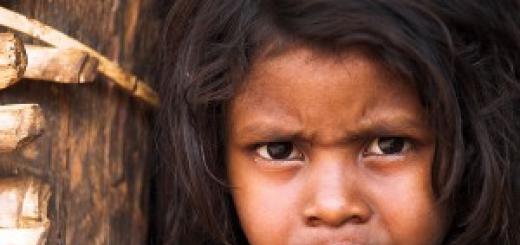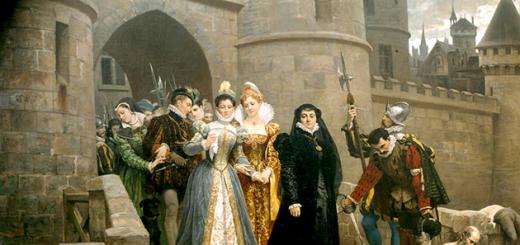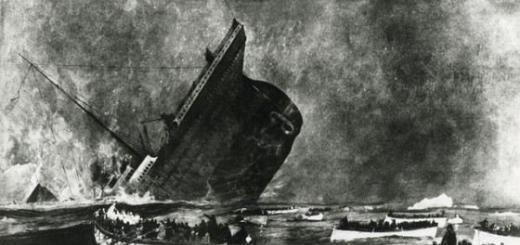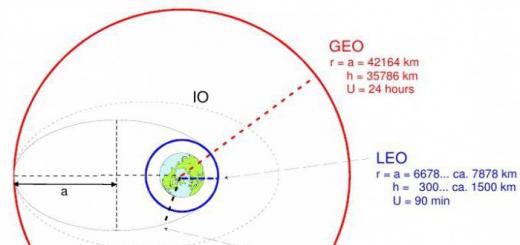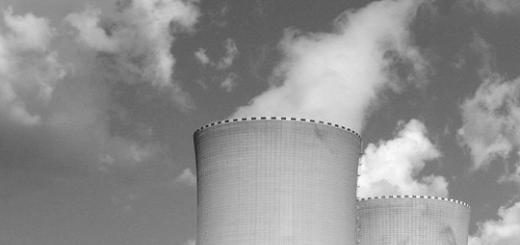He studies the history of the formation of the population of a certain territory, the patterns of its natural and mechanical movement, distribution over the territory, the ethnic, age and sex structure of the population, etc.
Definition 1
Population These are people who permanently live in a certain area.
Definition 2
Population- this is the number of people in a certain territory (in thousand people, million people).
Definition 3
Population density is the number of people per unit area (number of people/$km²$).
Definition 4
Population structure- this is the division of people into groups according to certain criteria (age, place of residence, ethnicity, etc.).
The distribution and reproduction of the population is influenced by both natural and social factors.
The history of the formation of the population of Africa
It is Africa, according to anthropologists, that is the cradle of mankind. After all, the most ancient remains of ancestors were found here. modern man.
Ready-made works on a similar topic
- Course work African population 470 rub.
- abstract African population 260 rub.
- Test African population 220 rub.
In ancient times, one of the ancient states known to modern historians is Ancient Egypt. Ethiopia was known in the east, Ghana in the west.
Throughout human history, the population of Africa has changed as a result of wars, geographical discoveries and research natural disasters, social change.
Today, the population of Africa, belonging to the three main races, can be divided into indigenous and alien. The main part of the inhabitants is the indigenous population.
The period of the colonial past, which lasted almost four centuries, led to a significant decrease in the population. Only during the period of the slave trade, about $100 million people were taken out of Africa.
Many inhabitants, especially children, died from the harsh conditions in the colonies, from diseases and poor sanitary conditions.
The resettlement of the peoples of Africa
About $500 million people live in Africa - about $1/10 of the world's population. It is distributed very unevenly across the territory. Reason - natural conditions, the history of the development and development of territories, the policy of states.
Example 1
The highest population density is in the Nile Delta (over $1,000$ people/$km²$).
This is one of the most densely populated areas not only in Africa, but on the entire planet. Remember that this is where Ancient Egypt was located.
The coasts of the Mediterranean Sea and the Gulf of Guinea and the southeastern coast of the continent are relatively densely populated. And in the areas of the Sahara and Kalahari deserts, the population is very small (mostly residents of oases). Some desert areas are completely deserted.
Modern racial and ethnic structure of the population of Africa
After the decline of the ancient states, the north of the mainland was occupied by the tribes of Arabs and Berbers - representatives of the Caucasoid race. South of the Sahara, the continent is inhabited by representatives negroid race. But this group is not homogeneous. They differ from each other in the shape of the head, skin color, height. This category includes Bushmen, Hottentots, Pygmies, Nilots, Ethiopians.
As a result of mixing Negroid and Mongoloid races formed Malagasy, inhabiting Madagascar. The Mediterranean coast was inhabited by people from the adjacent countries of Europe, and people from the Netherlands and Britain settled in the south.
Definition 5
Their descendants were called Afrikaners.
In the equatorial part, the Portuguese captured the colonies. This affected the formation of the state languages of most modern African countries. After gaining independence, many African countries began to carry out demographic policies aimed at improving the sanitary conditions of residents. This has significantly reduced mortality and increased the population of African countries. There is also a liberalization of ethnic relations. A mixture of racial traits, customs, languages, and cultures is formed.
The development and formation of the ethnic structure of the population of the mainland continues. The nation is currently in the process of being formed. Ethnic groups are represented by tribes and nationalities.
Africa belongs to the second type of population reproduction. Population growth is very high - $2.7$% per year. This led to a population explosion in the second half of the $XX$ century.
Africans profess various religions - both world (Islam, Christianity, Buddhism, Judaism), and local pagan cults.
Today ethnic composition The population of African countries is a rather complex community of peoples. Several hundred small and large ethnic groups live on the Black Continent. Some number from one to five million people. The most numerous of them are: Yoruba, Hausa, Igbo, Egyptian, Moroccan, Sudanese, Algerian Arabs, Fulani, Amhara.
Anthropological composition
The modern population of Africa is represented by various anthropological types that belong to different races. In total, there are up to 7 thousand ethnic groups and nationalities on this continent.
Indo-Mediterranean race
In the northern part of the continent, up to the southernmost border of the Sahara desert, peoples of the Indo-Mediterranean race live. Its representatives in Africa are the Berbers and Arabs, to the characteristic outward signs which belong to black wavy hair, swarthy skin, narrow face, dark eyes. As a rare exception, blue-eyed and fair-haired specimens are found among the Berbers.
Negro-Australoid race
Its representatives live south of the Sahara and are divided into three small races - Bushman, Negrill and Negro. The quantitative majority here belongs to the peoples of the Negro race, who live in the territory of Central and Western Sudan, in the upper reaches of the Nile and on the coast of Guinea. Their representatives include the Bantu and Nilotic peoples, who are distinguished by their tall stature, coarse black hair that curls in spirals, thick lips, dark skin and a wide nose.
The Negril race includes undersized African pygmies - inhabitants of tropical forests near the rivers Uele and Congo. In addition to small stature up to 142 cm, they are distinguished by overdeveloped tertiary hairline, a wide nose with a very flat bridge of the nose and lighter skin.
The modern peoples of the Bushman race live in the Kalahari desert, their representatives are the Hottentots and Bushmen. They are characterized by light (brown-yellow) skin, thin lips on a flat face, and increased wrinkling of the skin.
Ethiopian race
Occupies an intermediate step between the Negroid and the Indo-Mediterranean races. The peoples of the Ethiopian race live in northeast Africa (the Somali Peninsula, Ethiopia) and have dark wavy hair, thickened lips on a narrow face with a thin nose.
The population of Africa is over 1 billion people.
Africa is considered the ancestral home of mankind, because it was on the territory of this continent that the remains of ancient species homosapiens. In addition, Africa can be called the birthplace of religions, because in the regions of Africa you can find a huge variety of cultures and religions.
Africa is home to:
- Algerian, Moroccan, Sudanese, Egyptian Arabs;
- Yoruba;
- hausa;
- amhara;
- other nationalities.
On average, 22 people live per 1 km2, but the most densely populated place on the continent is the island of Mauritius (about 500 people live per 1 km2), and Libya is the least populated (1-2 people live per 1 km2).
The northern part of the African continent is inhabited by the peoples of the Indo-Mediterranean race, south of the Sahara is inhabited by the peoples of the Negro-Australoid race (they are divided into 3 small races - Negro, Negril, Bushman), and the northeast of Africa is inhabited by the peoples of the Ethiopian race.
Not in Africa state language: they are the languages of groups that have lived in this territory for a long time. The main ones are Afrosian, Nilo-Saharan, Niger-Kordofan, Khoisan, Indo-European language families. But the actual language is English.
Big cities Africa: Lagos (Nigeria), Cairo (Egypt), Alexandria (Egypt), Casablanca (Morocco), Kinshasa (Congo), Nairobi (Kenya).
The population of Africa professes Islam, Christianity, Protestantism, Catholicism, Judaism.
Lifespan
Africans live on average 50 years.
The African continent is characterized by rather low life expectancy rates (on average, people in the world live up to 65 years).
Tunisia and Libya are leaders: here people live on average up to 73 years, residents of Central and East Africa - up to 43 years, and Zambia and Zimbabwe scored the lowest - here people live only 32-33 years (this is due to the wide spread of AIDS) .
Low life expectancy is due to outbreaks of epidemics: people die not only from HIV / AIDS, but also from tuberculosis. And children often die from measles, malaria and malnutrition.
Health problems largely depend on the lack of medical workers (doctors and nurses flock to developed countries).
Traditions and customs of the peoples of Africa
An integral part of the customs and traditions of the peoples of Africa are shamans with supernatural powers and unique knowledge. All rituals are performed by shamans in special masks, which can be made in the form of the head of a non-existent animal or monster.
Africa has its own ideals of female beauty: beautiful women here are those who have long necks, so they hang rings on their necks and never take them off (otherwise the woman will die, because the neck loses muscle due to wearing hoops).
Africa is a hot and wild continent: despite the fact that today planes fly to all its corners, it is still a mysterious land of alluring dreams for us.
Africa. Population
Ethnic composition
The ethnic composition of the modern population of Africa is very complex (see map of peoples). The continent is inhabited by several hundred large and small ethnic groups. 107 of them, numbering more than 1 million people each, make up 86.2% of the total population (1983 est.). The number of 24 peoples exceeds 5 million people, and they make up 55.2% of the population of Africa. The largest of them are Egyptian Arabs, Hausa, Yoruba, Algerian Arabs, Moroccan Arabs, Fulbe, Igbo, Amhara, Oromo, Sudanese Arabs.
The countries of North and Northeast Africa are inhabited by peoples who speak the languages of the Afroasian family. The most common of the Semitic languages - Arabic is native to 101 million people (1 / 5 of all Africans). Arabs - the main population of Egypt, Tunisia, Algeria, Libya, Mauritania, Morocco; 49.1% of them live in Sudan, 26% in Chad.
In the Ethiopian group of Semitic peoples, the largest is the Amhara, which, together with the related Tigray, Gurage, Tigre, form the core of the emerging Ethiopian nation.
Peoples who speak Cushitic languages live in Ethiopia and neighboring countries; the largest of them is Oromo in southern Ethiopia. The Kushite group also includes Somalis and inhabitants of the mountainous regions of southern and central Ethiopia - ometo, kaffa, shinash, yamma, sidamo, etc. The vast desert expanses in the northeast of Sudan and the adjacent regions of Egypt and Somalia are occupied by the Beja.
ancient population North Africa- Berber peoples (shilh, tamazight, reefs in Morocco, Kabils and Shaviya in Algeria) - survived only in the mountainous and partly desert regions of the Sahara. A special place among them is occupied by the Tuareg (self-name imoshag), who roam the desert highlands of Ahaggar and Tassilin-Ajer in Algeria, occupy the Air highlands and the adjacent regions of Central Sahara in Niger; there are many of them in Mali.
To the south of the Sahara, there are peoples who speak Chadic languages (or Hausa languages): Hausa, Bura, Vandala, etc. The vast majority of Hausa are settled in Northern Nigeria. They also live in the adjacent regions of Niger. Hausa-related peoples - the Bura, Vandala, Bade, Masa, Kotoko, etc., are settled on the hills in the east of Nigeria.
The most extensive territory in Africa is occupied by peoples who speak the Kongo-Kordofanian languages. Among the peoples speaking the Niger-Congo languages, the ethnic groups that speak the Benue-Congo languages stand out for their multiplicity. They also include the Bantu peoples, who make up the vast majority of the population in many countries of Central, Eastern and Southern Africa. The 43 Bantu peoples number over 1 million people each. The largest of them are rwanda (in Rwanda, Zaire, Uganda and some neighboring countries), makua (in Malawi, Tanzania and other countries), rundi and ha (in Burundi, Zaire, Tanzania and Uganda), congo (in Zaire, Angola , Congo), Malawi (in Malawi, Zambia, Mozambique), Zulu (in South Africa), Shona (in Zimbabwe, Mozambique, Botswana), Xhosa (South Africa), Luba (in Zaire and neighboring countries). Other major Bantu peoples include Kikuyu, Tsonga, Nyamwezi, Ganda, Mongo, Luhya, Ovimbundu, Pedi, Bemba, Suto, Tswana.
The Benue-Congo languages are spoken by a number of large and small peoples of Nigeria and Cameroon (Ibibio, Tiv, Bamileke, Tikar, Ekoi, etc.).
Kwa-speaking peoples inhabit a vast area of the Guinean coast from Liberia to Cameroon: large peoples - Yoruba, Igbo, Bini, as well as Nule, Gbari, Igbira, Ijo and others in Nigeria, a group of Akan peoples in southern Ghana and in the BSC, Ewe in southern Ghana, Togo and neighboring countries; fon (eastern ewe) in Benin; a group of Kru peoples in the BSC and Liberia, small peoples of the coastal lagoons of the BSC, etc.
The peoples who speak Western Atlantic languages make up the main population of many countries in the extreme west of Africa: Wolof, Fulbe, Serer and others in Senegal, Balante, Fulbe and others in Guinea-Bissau, Temne, Limba, Fulbe and others in Sierra Leone , fulbe, kisi and others in Guinea. The most numerous are fulbes.
The peoples speaking Gur languages are settled in Burkina Faso, Ghana, BSK, Mali. The largest of them is mine, closely related peoples - Lobi, Bobo, Dogon. Other peoples of this group include pears, gourma, tem, cabre, etc.
Of the Mande peoples, the Mandinka are widely settled - in Guinea, Mali, Senegal, BSK. Close to them, the Bamana inhabit the central regions of Mali, the Mende live in Sierra Leone, the Soninka in northern Mali in neighboring states, and the Susu in the coastal regions of Guinea. The Mande group also includes Dan, Queni, Mano, Diula, Vai, Busa, Bandi, Loma, etc.
The peoples speaking the Adamawa-Eastern languages make up the majority of the population of the Central African Republic, they are also settled in Zaire, Cameroon and Sudan. The largest peoples are: Banda, Gbaya, Azande (Zande), Chamba, Mbum.
The Kordofan languages are spoken by the small peoples inhabiting the Kordofan mountains in Sudan: Koalib, Tumtum, Tegali, etc.
The peoples who speak Nilo-Saharan languages make up six groups. Shari-Nile languages are spoken by many peoples of the Nile river basin. Most of the Eastern Sudanese peoples (southern Luo - Acholi, Lango, Kumam, etc.; Joluo, Dinka, Nubians, Kalenjin, Teso, Turkana, Karamojong, Nuer, Masai, etc.) live in southern Sudan, in Uganda, Kenya. The Central Sudanese group is formed by the Moru-Madi, Mangbetu, Bagirmi and Sara, as well as the Pygmies - Efe, Aka, Asua and some others.
Khoisan peoples inhabit semi-desert territories in the southwestern part of Africa (in Namibia, Botswana, Angola, South Africa). These include Bushmen, Hottentots, mountain Damara. The island of Madagascar is inhabited by Malagasy speakers of Austronesian languages.
The Indo-European languages (Germanic, Romance and Indo-Aryan) are spoken by the population of European (Afrikaners, or Boers, British, French, Spaniards, Italians, Portuguese, etc.) and Asian (immigrants from India and Pakistan, Indo-Mauritians, etc.) origin. Individuals of European descent make up less than 1.5% of the African population. Their number after the African countries gained political independence has noticeably decreased. However, in South Africa they occupy a dominant position in economic and political life.
In terms of language and partly in culture, the mixed mestizo population adjoins the Europeans. In South Africa, it includes the so-called colored people. They are subjected, along with other "non-white" peoples, to severe racial discrimination. On the oceanic islands surrounding the African continent, as a result of ethnic mixing, various mestizo ethnic groups were formed (Reunion, Green Mys, Mauritian Creoles, etc.).
B. V. Andrianov, S. I. Bruk.
Ethnic processes - a change in the main features of an ethnic community (language, culture, self-consciousness, etc., that is, those features that distinguish this community from others) - are divided into processes of ethnic unification, including assimilation, consolidation and integration, and processes of ethnic separation . In Africa, not only their different types are represented, but also various stages of consolidation, integration and assimilation processes, as well as different forms ethnic communities - from small wandering groups of gatherers and hunters, preserving the remnants of the tribal system, to various ethnic groups of a transitional type, ethnolinguistic and ethnopolitical communities, large nationalities and nations of many millions.
The formation of the population of Africa took place for a long time as a result of complex migration processes, interaction and mutual influence of various ethno-cultural components. One of the important stages in the ethnic history of Africa is associated with the movement of the inhabitants of the Sahara as it dries up (from the 3rd century BC). Gradually, the Negroid tribes spread to the south of the continent. As a result of centuries-old migrations of peoples, different in anthropological type and language, the stages of consolidation and assimilation, in West Africa a mixed population. The next stage is associated with the movement of the Bantu peoples from the west (starting from the 1st millennium AD). AT East Africa they pushed back to the north and partially assimilated the Kushite tribes and, in the southwest, the Bushmen and Hottentots. As a result of the contacts of the newcomer Bantu-speaking tribes with the original ethnic substrate, the formation of the ethnic image of modern peoples took place. In the VII-XI centuries. Arabs migrated to North Africa, then to Central and Eastern Sudan, to the East African coast and the islands of the Indian Ocean. Big influence ethnic history was influenced by the ancient and medieval states of Africa - Ghana, Mali, Songhai, Congo, Cuba, etc. Within their borders, related tribes were united and gradually consolidated into nationalities. However, this natural process was disrupted by the slave trade, which led to the devastation of vast territories. The period of colonialism had a significant impact on the ethno-cultural development of Africa. Colonial dependence, the reactionary policy of the colonialists, aimed at maintaining socio-economic backwardness, at separating peoples, conserving obsolete institutions of the tribal society, separating the borders of colonies of single ethnic groups - contributed to ethnic stratification and isolationism, hampered the process of rapprochement of various ethnic groups. However, unification processes also developed during the colonial period. AT different countries centers of ethnic consolidation were emerging, and processes of ethnic integration were outlined. In the struggle against the colonialists, national self-consciousness developed and strengthened. After the achievement of political independence by the African states, new stage in their ethnic and cultural development. In the new historical conditions, the processes of formation of large ethnic communities are developing rapidly, capturing at the same time various levels and forms of the ethno-social structure - from families (large and small) to entire nationalities. Most ethno-social communities have already passed the stage of development denoted by the term "tribe". Everywhere there are processes of formation of nationalities, mixing, transformation of ethnic communities of different levels, replacement of tribal ties with territorial ones, strengthening of social stratification.
The conquest of independence contributed to the destruction of the patriarchal-feudal isolation of many areas, the strengthening of economic ties, the spread of common forms of culture and common literary major languages (Swahili in eastern Africa, Hausa and others in the west). There is a process of folding nations in the north, the extreme south (Afrikaners), in a number of countries Tropical Africa(Yoruba, Hausa, Igbo in Nigeria, Congo in Zaire and some others). As a rule, this process takes place on the basis of the consolidation of already existing nationalities. As for the formation of nations within state borders, then on present stage ethnosocial development, we can only talk about the trend of this process.
Diversity, lack of formality and amorphousness of ethnic communities in the states of Tropical Africa, the mobility of ethnic boundaries, the presence a large number transitional types do not always allow one to characterize definitely the level of ethnic development.
The processes of ethnic consolidation are intensively developing in Africa - the formation of large ethnic communities on a more or less homogeneous ethnic basis, or the further consolidation of the formed ethnos as its socio-economic and cultural development develops. They are observed among the Luhya and Kikuyu in Kenya, among the Akan peoples in Ghana, among the Igbo, Yoruba, Nupe and Ibibio in Nigeria, etc. Thus, ethnic groups close in language and culture living on the southern and eastern slopes of Mount Kenya are grouped around the Kikuyu: Embu, Mbere, Ndia, Kichugu, Meru. In terms of language, Embu, Kichugu, Mbere and Ndia are closest to the Kikuyu. Tribal languages and ethnic self-names are still preserved; Kikuyu, Embu and Meru are counted separately in censuses.
The level of consolidation processes in different ethnic groups is different. The Igbos in Nigeria are compactly settled and have a common material and spiritual culture. However, remnants of tribal division, tribal dialects remain, there are local differences in culture. If, according to the 1952-53 census, all the Igbos considered themselves a single people, then during the Nigerian crisis of 1966-70 (see article Nigeria. Historical outline) and subsequent years, there was a tendency to separate ethnic divisions. Ethnic divisions continue to exist among the Yoruba (Ijesha, Oyo, Ife, Egba, Egbado, Ondo, etc.). The trend towards the isolation of individual ethnic divisions is holding back the consolidation processes among the Igbo and Yoruba.
Along with the consolidation in many countries, the processes of interethnic integration, the rapprochement of different ethnic groups, the emergence of common cultural features have developed. They proceed on the basis of the interaction of various ethnic components that differ in language, as well as the level of socio-economic and cultural development. These processes can develop into complete ethnic integration of different ethnic groups within the framework of one state.
Integration processes are taking place everywhere in Africa, and in some countries they are taking place on the scale of the entire state and at the level of individual nationalities. Socio-economic transformations, the creation of a single national market, the gradual emergence of a national culture within state borders, consisting of many ethnic cultures, contribute to the gradual formation of a community consciousness - Nigerian, Congolese, Guinean, etc. Africans are increasingly calling themselves non-traditional ethnonyms, and by the name of the state - Nigerians, Congolese, Guineans, etc.
An example of integration at the level of individual nationalities is the ethnic processes of the Hausa. Around the Hausa, who make up the majority of the population of Northern Nigeria, not only closely related ethnic groups are grouped, but there is also a gradual assimilation of many small tribes in the central regions of the country: the language and culture of the Hausa is spreading more and more. From these heterogeneous ethnic components, the Hausa nation is formed. It consists of: proper Hausa, Angas, Ankwe, Sura, Bade, Boleva, Karekare, Tantale, Bura, Vandala, Masa, Musgu, Mubi, etc. Most of these groups retain their self-names. The majority speaks the Hausa language, while others are bilingual and speak their native languages. Many of these peoples were part of the Hausa states (see Hausa states), their economic and cultural contacts with the Hausa have a long history, which contributes to the integration processes. In some cases, integration processes can lead to the formation of a single ethnic community within state borders. In other cases, in conditions of ethnic pluralism and the complexity of interethnic relations, several centers of integration and, accordingly, several ethno-social communities may arise. As a result of integration processes in African states, new ethno-political ones are being formed. (meta-ethnic) communities.
Assimilation processes are obvious where people live in the neighborhood, which differ sharply in terms of socio-economic development, origin, language and culture. Such are the Kikuyu in Kenya and the Ndorobo groups assimilated by them, the Luo Nilots and the Bantu-speaking Kisii and Suba; in Rwanda, Rwanda and the Twa Pygmies; in Botswana, the Tswana and the Bushmen; in Togo, small ethnic communities gradually merge with the Ewe - akebu, akposo, adele. In Guinea, there is a merger with Kisi close in language and culture to Baga, Mmani, and Landum. At the same time, many Baga and Landuma speak the Susu language and are partly assimilated by the Susu. In the Sudan, the Arabs assimilate the Nubians, the Beja, and others. In the BSK Baule, the Lagoon peoples, the Krobu, the Gwa, and others assimilate.
Along with the unification processes in a number of regions of Africa, processes of ethnic division are also observed, although in the past their role was incomparably greater. Thus, in the history of Africa, widespread migrations of Arab tribes are known, which led to the formation of separate ethnic groups. In ancient times, for centuries Central Africa there was a complex process of spreading and separating the Bantu-speaking ethnic groups; Medieval migrations of the Luo from the banks of the Nile to the south - to the Mezhozerie are known, accompanied by their division into a number of ethnic groups; a similar process took place in the 19th century, when part of the South African Zulu (Nguni) tribes migrated north. In Kenya, the Masaba and Bukusu ethnic groups separated from the Gishu.
The nature and pace of ethnic processes in Africa are determined by historical, socio-economic and political factors: general economic backwardness, the multi-structural nature of the economy, the dominance of foreign monopolies in many countries, unresolved social problems, the acuteness of the national question, extraterritorial problems inherited from colonialism, etc.
Many of the African ethnic groups retain a complex hierarchical ethno-social structure, when the same set of people is simultaneously part of ethnic communities of different levels. Such, for example, is the multimillion-strong ethnolinguistic community of the Akan, which unites a group of ethnic groups in southern and central Ghana and neighboring regions of the BSC. The proximity of the Akan languages contributes to ethno-cultural rapprochement both within the framework of the entire broad ethno-linguistic community and at the level of large ethno-social divisions - Ashanti, Fanti, Akim, etc. The socio-economic transformations taking place in Ghana contribute to the formation of ethno-social communities among different Akan peoples - nationalities. This process is developing in parallel with the formation of a broad ethno-political community within the state of Ghana.
Ethnic processes in modern Africa are not only complex, but also extremely contradictory. On the one hand, there is an increase in self-awareness, the erasure of tribal differences, the creation of larger ethno-social and ethno-political communities, the rejection of narrow tribal interests and the emphasis on national ones. On the other hand, there is an increase in ethnic self-consciousness, an increase in its role in political life, and an increase in tribal separatism.
Progressive economic and cultural processes, urbanization, and population migration contribute to the rapprochement of peoples. African cities with a rapidly growing working class, developing bourgeoisie and intelligentsia have become the center of the development of consolidation and integration processes. In cities, there is an intensive exchange of cultural values between representatives of different peoples, convergence of languages and dialects, and the formation of literary languages. All this is an important condition for the elimination of tribal isolation (detribalization).
New inter-ethnic ties are emerging in the cities, although this does not mean that the city dweller immediately breaks with his ethnic group. There are numerous ethnic unions and fraternities in the cities, which testifies to the preservation of community-tribal ties.
Mass migrations of the population, work in cities at the same enterprises of people of different ethnicity contribute to the breakdown of traditional tribal structures and activate ethnic processes. Small ethnic groups, as a rule, quickly adapt to a different ethnic environment and can be completely assimilated; numerous migrants prefer to settle together and to a certain extent retain the ethnic characteristics inherent in their way of life in their homeland, and certain specifics of their social organization. In some cases, migrants are forced to stick together by the not always friendly attitude of the local population and the risk of conflict. Ethnic particularism is also facilitated by the order of population distribution established in colonial times in many cities and large villages: settlement in quarters is ethnic in nature, people from the same ethnic group prefer to settle together. In Ghana, the quarters where the alien population lives are called "zongo", in Northern Nigeria - "sabon gari" (in the Hausa language - "new city"). This situation not only does not lead to detribalization, but, on the contrary, strengthens ethnic self-awareness.
The African states that were formed within the framework of former colonial borders inherited all the difficulties arising from the discrepancy between political and ethnic borders. Such large peoples as the Ewe, Kongo, and others found themselves in different states. The division by political borders of a single ethnic territory of a people and the long-term preservation of such a division lead to the emergence of serious differences between parts of the people. The general socio-economic and political conditions in which ethnic processes take place are of significant importance. State policy can promote integration processes and the formation of a single community from different ethno-linguistic components, otherwise several ethnic communities may form. So, in Togo, with the favorable development of integration processes, the Ewe can merge into a single Togolese ethnic community, in Ghana they can remain as an independent ethnic unit.
In the context of a multi-structural economy, the social structure of ethnic communities, including nationalities and emerging nations, is extremely heterogeneous. The preservation of many archaic institutions and structures that originate from the depths of the tribal society: castes, patriarchal slavery, contempt for certain professions, ethnic prejudices and prejudices, tribal morality, a significant role of traditional power systems, ethnic stratification, etc. - leave a significant imprint on the pace and level of ethnic, primarily integration processes.
Specific historical conditions predetermine various options ethnic development. In the countries of North Africa with a more or less homogeneous ethnic composition, multi-million Arabic-speaking nations have already formed - Algerian, Egyptian, Moroccan, etc. In most countries, ethnic development is proceeding along the path of strengthening the largest ethnic communities and strengthening integration processes. Most a prime example the formation of a single ethno-political community - Tanzania, where on the basis of the Swahili language, recognized as the official language of the country, more than a hundred different ethnic groups form a single community that can turn into a Tanzanian nation.
In South Africa, the ethnic development of the indigenous African peoples is deformed by the reactionary racial policy of the ruling circles of South Africa. The processes of formation of large ethnic communities (nationalities and nations) among the Bantu peoples are actively going on. The creation of bantustans and the ongoing conservation of traditional institutions of the tribal society in South Africa negative impact on the processes of national consolidation.
The area of the African continent is the second largest after Eurasia. 1/7 of the total population of the planet lives on the continent. The population density of Africa, its ethnic and racial composition is very different. We will talk about how exactly they differ in this article.
Geography of Africa
Africa is the closest neighbor of Eurasia, from which it is separated by several seas and straits. It lies in both the southern and northern hemispheres of the Earth, the equator crosses it almost in the middle. The continent is washed by the Indian and Atlantic oceans.
The area of mainland Africa is 29.2 million km2. From north to south, it stretches for almost 8 thousand kilometers. The extreme western and eastern points at the widest point are separated from each other by about 7.5 thousand kilometers.
The relief of the continent is predominantly flat. Coastline not strongly indented, without the formation of deep bays and peninsulas protruding into the sea. There are several islands nearby, which, together with the main landmass of the mainland, are part of the African part of the world.
The geography of Africa largely determines its climate, nature, and population. Stretching from the southern subtropical to the northern subtropical zone, it is the hottest continent on Earth. Most of it is occupied by deserts, semi-deserts and savannahs. Despite this, on the territory of the continent there are tropical rainforests, large lakes and full-flowing rivers. The two largest river systems in Africa belong to the Nile and the Congo. They are also among the largest in the world.
Features of the population of Africa
The continent is called the cradle of mankind. It is believed that it was here that the first representatives of the human race appeared, who then settled throughout the planet. Now about 56 states are formed on the territory of the mainland and more than a billion people live. The total population density of Africa is 30.51 people / km 2.
All states of the continent differ in their level of development. However, many of them are characterized by poverty, economic backwardness and poor health care. In this regard, the average life expectancy of Africans is approximately 50 years.
Since the 20th century, population growth has steadily increased. Therefore, the indicator of the continent occupies a leading position in the world. It is expected that the number of its inhabitants will double by 2050.
The most populous country is Nigeria with 195 million people. After it come: Ethiopia (106 million), Egypt (97 million), Democratic Republic of the Congo (84 million), Tanzania (57 million), South Africa (56 million). The smallest population lives in the Seychelles (86,000 people), Sao Tome and Principe (200,700 people), Mayotte (257,000 people), Cape Verde (536,000 people).
Ethnic composition
The population of African countries is very diverse in composition. It represents up to 8000 ethnic groups and peoples. The racial composition is dominated by representatives of the Negroid and Caucasoid (Arabs) type. Mixed types also live in South Africa and nearby countries.
Many nationalities are very small and live within one or two villages. Only 120 ethnic groups have more than one million people, and they represent 90% of all inhabitants of the African continent.
The entire north is inhabited predominantly by Arabs and Berbers who speak Afroasian languages. Negro-Australian peoples live in the southern part of the Sahara and below: Nilotic, Bushmen, Bantu, Pygmies. In Somalia, Kenya, Ethiopia live mainly Ethiopians, Kushites, Omotes.
Bantu, Bushmen, Hottentots live in the southern and central parts of the continent. By virtue of historical events, a separate ethnic group was formed here - the Afrikaners. These are the descendants of the first colonists from Holland, France, Germany, who speak Afrikaans. A small percentage of the population is also made up of people from Asia and other regions of the world.

Population placement
Not all regions of the hottest continent are favorable for life, so the population is distributed very unevenly. It is mainly concentrated near water sources - large rivers, lakes and oases. For example, in the Nile Valley, there are almost 1,200 people per square kilometer. A large number of people live in the area of Lake Victoria, on the shores of the Gulf of Guinea (Nigeria, Togo, Benin) and the Mediterranean Sea (Algeria, Tunisia, Morocco).
In addition, the high population density of Africa is observed in areas with developed agriculture and industry. People from all countries of the continent flock here for the sake of work. So, popular places are the central parts of the mainland rich in deposits, as well as South Africa.
If we talk about specific countries, then Rwanda and Burundi (500 people / km 2) have a high density on the continent. They are located within the equatorial zone with a warm and humid climate, frequent rainfall, next to the large lakes of Tanganyika and Kivu. If we talk about Africa as a whole, then the highest density is observed on the island of Marikiye (628 people / km 2). The smallest number of people per square kilometer lives in Namibia, Mauritania, Libya, Botswana, Western Sahara (2-4 people / km 2), where the climate is the most arid.
Mauritius
The island of Mauritius and the country of the same name are located in the Indian Ocean to the east of Madagascar. Currently, 1.3 million people live here, and the population density is the highest in all of Africa. This is surprising, because back in the 15th century there were no people on the island at all.
The first settlers of Mauritius were European sailors - first the Portuguese, then the Dutch, French and British. Europeans quickly mastered the island. They organized plantations of cane, coffee, cotton, tobacco, cassava and other crops on it, bringing the inhabitants of the African continent to work.

The modern population of Mauritius is the descendants of the colonizers, slaves, as well as hired workers. The descendants of mixed marriages, mestizos, make up 27% of all residents of the country, another 68% are Indo-Mauritians - descendants of immigrants from India. Approximately 5% of the inhabitants are of Chinese and French origin.
The country has no official language and religion. Many residents speak English, French, Mauritanian Creole and Bhojpuri. Thanks to unusual story, Mauritius combines different beliefs, traditions, architecture. Islam, Hinduism, Catholicism, Protestantism, Buddhism and other religions coexist under one roof.
Namibia
Of the official countries, the Republic of Namibia has lowest density population in Africa - 3.1 people / km 2. Only the disputed territory of Western Sahara is characterized by a lower indicator (2.2 people / km 2).
Namibia is located in the southwest of the continent, on the coast of the Atlantic Ocean. In the north, its territory is occupied by savannas and light forests, in the south and west it is covered by the Namib and Kalahari deserts. There is little rainfall, and most rivers appear only during the rainy season.
The country is inhabited by approximately two million people. More than 80% belong to the Bantu peoples, who penetrated here in the Middle Ages. Indigenous people- Bushmen and Nama - make up less than 10%. The rest of the inhabitants are descendants of mixed color marriages, as well as marriages between German colonists and Africans.

Life in the Sahara
North Africa has the largest desert on the planet. From west to east it stretches for 4800 kilometers and covers about 30% of the continent. Local temperatures during the day reach +40 °C, in some areas they reach +58 °C.
There are ten states on the territory of the Sahara, but its vast expanses are uninhabited. It is hot and dry here, and the vegetation is represented mainly by shrubs, rarely growing herbs and trees. Life in the desert could be completely unbearable if not for the oases and the Nile. The bulk of the population lives there.
Many peoples of the Sahara lead a semi-nomadic lifestyle. They breed sheep, goats and camels, and collect wild berries and fruits. Cereals, fruits and vegetables are grown in oases, valleys and deltas.

African cities
The main population of Africa is the rural population. Approximately 2/3 live in separate small settlements or large villages where communal land use is developed. However, the continent has the highest rate of urbanization in the world, and in the coming decades, everything can change dramatically.
Every year the number of urban residents increases by 4-5%. Rural countries are still Burundi, Lesotho, Rwanda. But in South Africa, Tunisia, Algeria, Libya, Mauritius, there are more and more cities.

There are currently about 40 million-plus cities in Africa. Among them are Cairo in Egypt (17.8 million), Lagos in Nigeria (11.5 million), Kinshasa in the DRC (10 million), Johannesburg in South Africa (6.2 million), Khartoum in Sudan (5.2 million), Luanda in Angola (5.2 million). It is predicted that half of Africans will live in cities by 2035.
